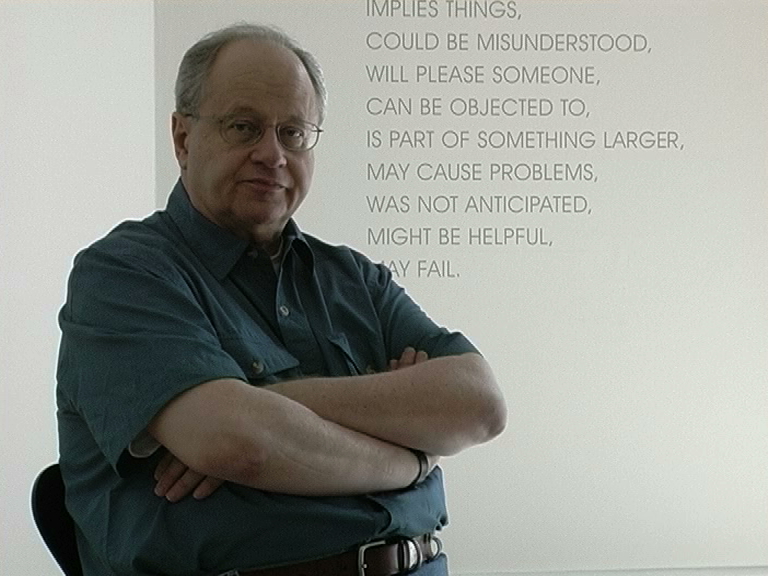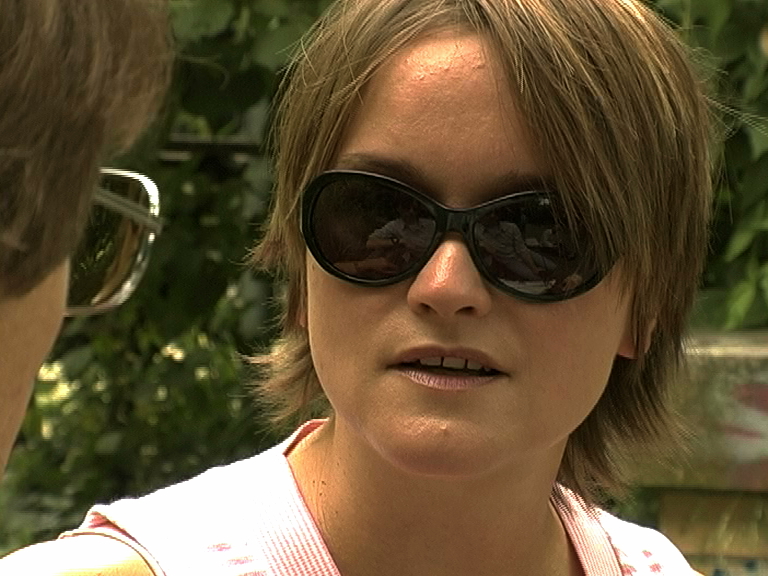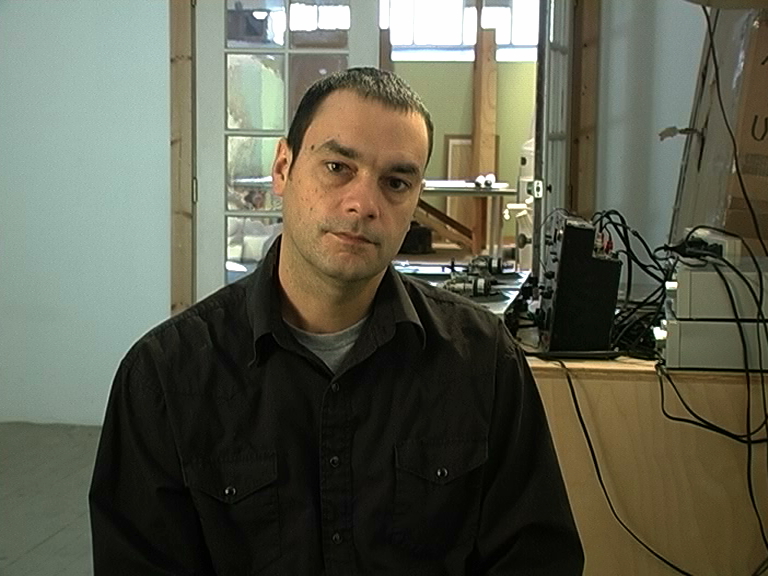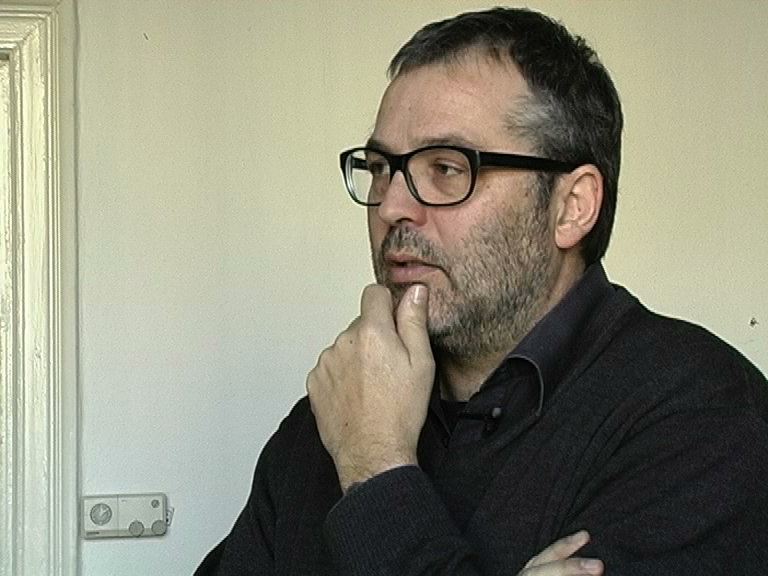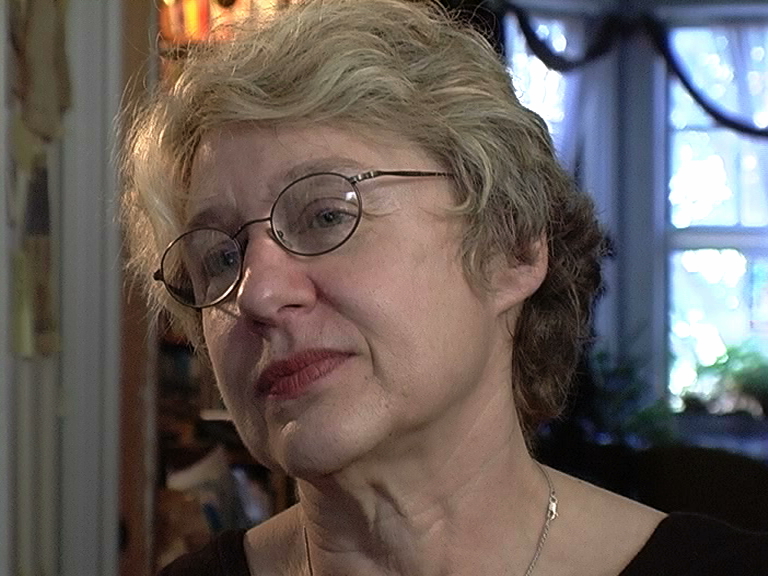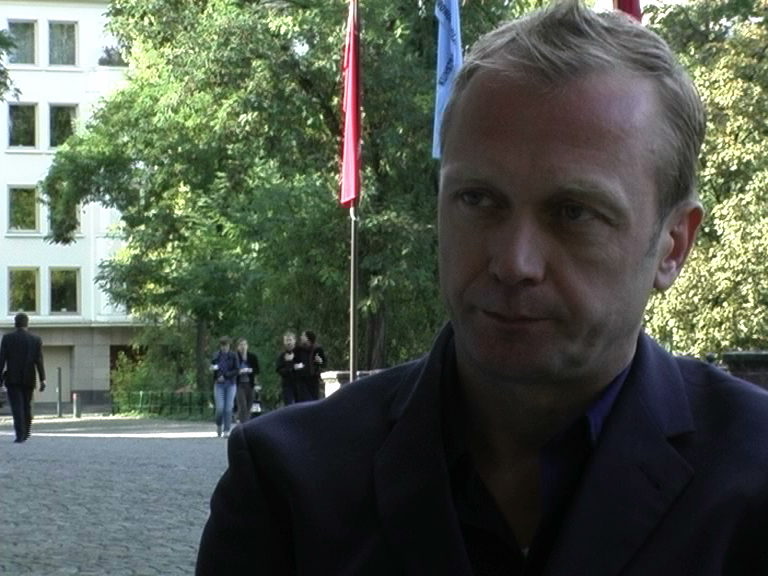S.R.: I would like to start with a question about a historical event, let’s call it, in your own history. What let you burn your early works in the 60s? What was this decision?
J.B.: I was a painter and getting more and more dissatisfied with painting and thinking more and more I was somehow on the wrong road. I wasn’t sure what the right road was. And I had this movie theatre that was vacant that I was using as a studio which was quite large, but it was getting more and more filled up with paintings, and somehow they began to all look alike in some way. I found that disturbing and I got to project into the future that eventually I would be suffocated by having so many paintings. They weren’t getting out into the world anyway. That, along with the idea that it was about the process of doing and I really didn’t care so much about keeping things, and I had photographed documentation of them. So I said there was really no necessity to have these. So I decided, I somehow wanted to make them all smaller somehow. I thought about photographing them and microdots and that sort of thing. But the idea of atomization here became attractive to me. Somehow I got the idea that I would not burn, but cremate them. So I actually went to a mortuary, and most of them thought I was a little bit crazy, but I found one that would do it at night when nobody was around. It turned out that the man that did the actual cremation was an artist and he really enjoyed the idea of it. We cremated all the paintings. They had these boxes for the ashes of one adult. I got nine and a half boxes, that was my total amount of painting. And then I found an urn for the ashes in the shape of a book. You see I love books a lot and I can put it on my shelf. There was a plaque made, the dates when I began painting and when I stopped painting. And then I put a notice in the newspaper, a legal notice, and that was it. And then I was off to find some other way to do art [laughs] after that.
S.R.: When was it exactly?
J.B.: That was in, that would have been, the dates, what comes to mind is 1968, something like that.

S.R.: So if we remind that you already did some conceptual work before.
J.B.: Yes. It wasn’t just that I stopped doing one thing and began doing another thing, there was some overlapping. The last works I did on canvas and stretcher bars were some works, which you have in that catalogue with text and photographic imagery and text on canvas. And after that body of work I did a series of paintings that were done by other painters. They painted the painting and then I had their name lettered underneath. Those were called the “commissioned paintings” because I actually I commissioned various painters to paint these for me. I gave them a selection of images that they could use and then they would chose one. They all have a pointing hand in them, pointing to something. And that was the last work I did where there was any obvious reference to art. When I’m saying that the obvious reference would be the canvas and the stretcher bars and the paint. After that it became pretty much photography, films, videos, books, posters, and that sort of thing.
S.R.: I like these “commissioned paintings“ a lot, because they are using a specific strategy of authorship. Because you select images, but you have a full bunch of a selection and give them to another who can have his own choice or his selection.
J.B.: It’s a bit controlled, but still there is some freedom in it.
S.R.: If we consider this development in your own work, in my perspective it’s very strongly going in this direction what we now consider as Conceptual art. That is not a small group of artists in one gallery. I think it’s much more something like a big break in the history or the tradition of art. Very important for that was the combination of images, of pictures and text, sometimes on different layers, sometimes parallel. How was your reception of the critique that was set from Joseph Kosuth in the beginning of the 70s from New York where he tried to exclude a lot of artists, which from our point of perspective are absolutely Conceptual artists?

J.B.: Well I thought it was a nice attempt on his part to make a very narrow definition of Conceptual art. I had no quarrel with that. I just thought there could be more to Conceptual art than just that. I remember a colleague at the time, Douglas Huebler, asking Joseph, he said what would you call that, radical Conceptual art or a radicon? He said and trying to make fun of it. But I think you are right. I’ve always seen it as some kind of break, a paradigm break, a shift. Let’s say, going from the handmade object, let’s say, into something that’s more Duchampian, I think, where the artist strategizes rather than literally makes the works. And my idea of Conceptual art has always been including Minimal art as well. I never saw them as two separate categories, Minimal art and Conceptual art. All those artists were talking to one another. There was a break between painters and Minimal and Conceptual artists. But I can never quite separate Minimal artists from Conceptual artists. I have a hard time separating modernism from post-modernism. You think you know and then when you start to talk about it, it gets very messy.
S.R.: Maybe let me start from that point, because many historians try to divide between modernist practices of photography and post-modern strategies of photography. Your own work would be the exception, because most of the theoreticians locate the post-modern photography from the appropriationists on, but you were fifteen years, eighteen years earlier with your works because you were already appropriating images from popular culture and developing them to a specific artistic or cultural image. And this is a thing that was always very interesting for me. How did you start using for example images from television or popular culture?
J.B.: Yeah, ok let’s start with from television. It seemed to me that at least at that moment, let‘s say, in the early 70s, that’s when the Sony Portapack came out and a lot of artists then were able to do video, and film. That was more expensive, of course, but Super 8 or 16. That idea of a photographic imagery was very much in the air, and I was using both film and video and still-photography trying really to figure out my own mind which, specifically in one Greenbergian sense, what were the properties of one material and the properties of another material and so on. For a lot people TV was more real than the world around them.
You know there is this great film with Peter Sellers, “Being There”, from the Jerzy Kosinski novel, where this fellow is totally cut off from society and he learns all his behavior from watching television. It’s not too far from the truth. So what I would do, I would just set up a camera in front of the television with a timing-device that would take a photograph every ten minutes, let‘s say. So I wouldn’t even have to make an aesthetic decision, the camera would make it for me, and that would be raw material I would use. I would do the same thing by putting a TV camera outside of my studio and then having a feed into here, and I would just be taking photographs, cars going by, people walking by, that sort of thing.
I think I could make an argument that that’s more real for a lot of people than some snapshot, a photograph they were taking as something where they have been or what have you. I think we are so accustomed to looking at photographic reproductions that it’s more real.
S.R.: So we are all Mr. Chance.
J.B.: Yes, I think so. [laughs]
S.R.: Let me come a little bit to the historical references. Do you think that you can tell us what you consider as your strongest influence from the world, from literature, from whatever.
J.B.: I have certain heroes, of course. I suppose heroes would be an influence. Two I quite often name are Giotto and Matisse. They seem vastly the similar but what I see in them is a sense of simplicity, but paradoxically being very profound at the same time. I have more contemporary heroes. Sol LeWitt is one of my peers in contemporary. But I always thought he was just brilliant in the way he strategizes his work. It looks utterly simple but it’s incredibly well thought out what he does. Those were three. Literature, probably Cervantes, Laurence Stern, Tristram Shandy, Don Quijote. I really find them like Doppelgängers of myself. The more I read about them, the more I think that’s me. It certainly seems very similar.
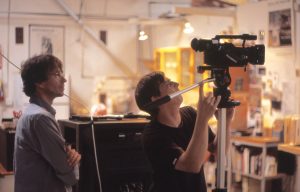
S.R.: That sounds interesting this kind of if you read a book and you recognize yourself.
J.B.: Excactly and you don’t feel so crazy. At least, one other person is as crazy as I am. [laughs]
S.R.: You are working in a very wide field. You use painting, you use photography, you use different strategies or rhetorics of texts. In advertising you can say it’s very simple, you want to sell an object, you want to sell a product. But how would you describe your own aim or goal, this artistic goal?
J.B.: Not my only goal of course, but a lot of the way I do my work has been influenced by teaching, the teaching that I have done. I think there that it doesn’t do any good to lecture students about “do this, do this, do that”. If they are not really understanding what you are saying or not accepting what you’re saying. I’ve always said that you really haven’t taught until you see the light in the students‘ eyes – that the light bulb goes on – and then you make some communication.
I try to do the same thing in art, and here is where the paradox is, and this is why I like Matisse and Giotto so much because they look so simple. In other words, for the most visually illiterate person there still might be something there of interest. That’s maybe all that they would get, but still there is something. But paradoxically then it should be as profound as you could possibly make it for the most aesthetically sort of cultivated person that really knows a lot about art. You should be able to satisfy almost two conflicting worlds. And that’s one of the challenges of any good art.
S.R.: In relation to that, next question: Do you think that the conceptual paradigms, because what you were talking about, could be a part of a paradigm in Conceptual art, do you think that the conceptual paradigms are still in function?
J.B.: I think very much. I have an art critic friend of mine who thinks that’s a plot. [laughs] They take over the art world. That’s all there is. I don’t think that it’s that pervasive, but certainly the influence of Conceptual and Minimal art is constantly there. I don’t think it’s going to go away. I think it was born with Duchamp and the Surrealists and Dada. Once artists had permission, it just simply divided the world. A close friend of mine, a critic and a painter, of course he hates Duchamp and anything coming ouf of Duchamp, but we still talk. I’m interested in painting and he is interested in painting. Unfortunately he is not interested in the stuff I’m interested in [laughs] but at least that gives us something to talk about.

S.R.: If you say the art world is divided, but I feel or I see that in many contemporary practices we have conceptual influences. But I like to separate the ones which are more interested in issues and philosophical or epistemological concerns and the ones which are much more on the surface, like graphic design or something like that. Do you think that it’s possible that this younger generation, for example, today we saw this exhibition of Sam Durant in a gallery here, do you think that it’s possible to renew constantly these conceptual paradigms?
J.B.: It seems to be happening. On the other hand, I quite often think that there are sort of pendulum shifts. When you get tired of something and it shifts off to something else. I could speculate that art is going to get more and more conservative. There are signs of that. Writers and collectors and museum people are beginning to value technique and craft and so on. How beautiful this person can draw or paint an so on. That’s almost like a reaction to something. I guess if I could predict I would be a millionaire art dealer. As soon as you predict, it doesn’t happen.
S.R.: Would you like to be an artist again? If you had the choice?
J.B: An artist again? What do you mean?
S.R.: If you had the choice starting again with art, maybe you started studying art, you would again use this possibility to be an artist, or would you want to be something else?
J.B.: Oh I see, if I could play the film backwards, would I still make a choice? That’s a good question. I sort of got a little late into art, because I really had this social consciousness, actually I thought I should be a social worker, and then I thought art was very self-indulgent, massapatory, it really didn’t help anybody. And my epiphany came when I was teaching juvenile delinquents – next step would be prison – and I discovered they valued doing art more than I did, and I’d say, well that’s interesting. It seemingly does some good, and I suppose it’s a kind of – for want of a better word – some “spiritual nourishment” that people do need. I guess that was enough. I said I probably have more gifts as an artist than a social worker and I can always help out by some social courses by donating art or whatever in a live action.
So I guess knowing now, what I know, yes. If I didn‘t know what I know now, then it would have been the same agony. Sometimes I want to quit. In the middle of the night I think all artists do is make trinkets for rich people. And I get discouraged, but then I just know that’s part of it. It does supply a lot of nourishment for other people, too.
S.R.: I have one more regular question in my list. And this is a little bit more personal interest. How would you describe your ideal typical daily work as an artist?
J.B.: Well my good friend, Lawrence Weiner, once called me a nine-to-five-artist, like an office worker. I guess he’s right. In a sense I do have a very routinized life. We open up the studio at 10 o’clock and we close at 6 o‘ clock. You know, everyday, well any other than Saturdays and Sundays. I think if you are an artist you belong in your studio. My good friend Bruce Nauman always said, it doesn’t even matter if all you do is sweep up the studio, at least you are doing something. And the idea that eventually you’re going to get bored. I think creativity comes out of boredom, so you start doing something. I don’t think it‘s going to happen unless you are there in your studio. I really think it’s very important.
S.R.: That‘s interesting, I think it’s the opposite to what Daniel Buren is practicing with his in situ-works. We just met him three weeks or four weeks ago. I asked him, how it came out after thirty years traveling around and having no studio, and he said, I feel fine. It’s still being on the trip and so on. This is very interesting to see these polar types of working with art. As a young student he was traveling around through the studios in Southern France visiting all the great masters like Picasso. He developed his own practice out of this experience. The opposite is to have this very concentrated situation of the studio where you continue your own work step by step.
J.B.: There can be the person that really never gets out of their studio and is a hermit. Perhaps you‘d call them a closet artist. The work never gets out into the world. I think I was kind of like that when I was in this movie theatre, I didn’t know how to get my work out in the world, I just kept painting. But on the other hand Daniel would be a good case, a person that was always out in the world. And I think between that artists locate themselves. I don’t know that it’s possible ever to get it right. Sometimes I think I’m on the road too much and sometimes I think I’m on the road too little. It’s really hard to get the right balance. I guess the answer is how and where do you do your best work and then you’ll obviously in situ. I like Lawrence Weiner, a good friend and also Daniel is too, he’s out in the world a lot, too. He does works in the house, but he is on the road a lot. I couldn’t do it. Everybody finds their own way of being able to address that problem.
S.R.: I think I got some very useful answers from you. Thank you very much. At the end of the interview I want to ask you if you want to say something from your heart?
J.B.: Free all artists?! [laughs]
S.R.: Maybe…
J.B.: No. I have nothing to say ….
S.R.: Thank you very much. It was a great honor to be guest in your studio.











